Association Mapping
Before outlining the basic elements of the association mapping process, it is important to understand its relationship to asset-based community development. Traditional approaches to community development usually involve top-down or outside-in approaches. Oftentimes, consequences of these approaches are the support of “needs-based” solutions that develop policies and programs that focus on the perceived deficiencies of residents and their families and often promote dependency.
An alternative to top-down or outside-in approaches involves pinpointing available local individual and associational assets, connecting them with one another in ways that multiply their power and effectiveness, and engaging local institutions that are not yet available for local development purposes. Called asset-based community development, this approach assumes that social and economic revitalization start with what is already present in the community: the capacities of residents and the neighborhood’s associations and institutions. In this guide, associations are defined as smaller, face-to-face groups where members do the work and are not paid. Institutions, on the other hand, are organizations where paid staff do the work. Residents, associations, and institutions, all have a role to play in the development process. To support these groups, community leaders must understand each of these assets and what they can do:
- Residents, including those with low incomes, are people with talents and solutions. They are not just clients with problems. Identifying and mobilizing residents’ gifts, skills and capacities helps build both community problemsolving abilities and economic power.
- Local citizen associations are active in virtually every community as people organize around common cultural values, shared social problems, physical proximity, social movements, and specific tasks. Identifying associations and understanding what they do are important steps towards re-empowering citizens and counteracting the dependency behaviors of needs-based strategies.
- Neighborhood institutions are traditionally defined as not-for-profit, for-profit, and government. Thus, they include non-profit agencies, businesses, libraries, and parks. Each neighborhood institution can bring many assets to support the community building initiatives of citizens and their associations.
While all three assets are critical resources for comprehensive community building, this guide is focused on only one of those assets—local associations. The reason for this special emphasis is that local associations are rarely inventoried at the neighborhood level. While there are often local lists of social services, government programs, and businesses, neighborhood associations tend to be an unexplored community resource. Nonetheless, recent research indicates that they are numerous in even the lowest income neighborhoods and that they are performing many functions that support the health, welfare, and economy of local residents.
Comprised of a group of citizens working together, associations are amplifiers of the gifts, talents, and skills of individual community members. Residents in all communities, regardless of income, are continuously forming new associations. Churches, block clubs, local chapters of national organizations, and informally organized special interest groups constantly emerge and reshape themselves as individuals link their similar interests and purposes. These associations are the basic units through which citizens empower one another and mobilize each other’s capacities to improve their lives and the lives of neighbors.
Forms and Surveys
Submit your organization form (electronic form link)
Submit your organization form (PDF)
Association Questionnaire (PDF)





